Review: The Mughals and The Sufis by Muzaffar Alam
A comprehensive review of the many different kinds of interactions between Sufis, monarchs, political ideology and religious contestation in Mughal India
In his latest book, Muzaffar Alam, the foremost historian of Mughal India, attempts to map the diverse nature of interactions between the Mughals and the Sufis, and the changing place of Sufism in Indian life over the last few centuries. The Sufis are normally seen as otherworldly, or far removed from power, however powerful their own orders or silsilas may have been. In this book Professor Alam offers a revisionist perspective and provides a comprehensive review of the many different kinds of interactions between Sufis, monarchs, political ideology and religious contestation.
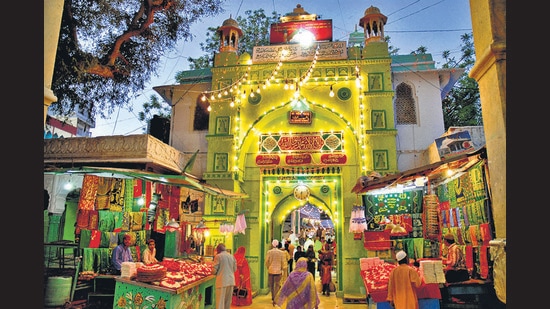
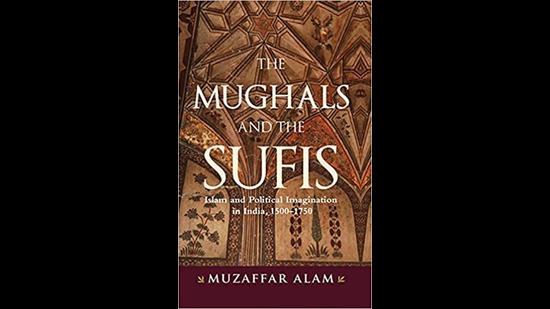
The Chishtis were the dominant Sufi silsila in North India before Babar’s conquest, and were intimately associated with the Lodhis. Sheikh Abdul Quddus Gangohi, the leading Chishti Sufi acted as a pir to the Lodhi monarchs, and had a very wide following among the Lodhi nobles. Early in his career he had to leave his native place Rudauli because of the dominance of local Rajputs who allowed “pork to be openly sold in the market” and their other profane deeds. A Hindavi poet sometimes known as Alakh Das, Sheikh Abdul Quddus also compiled a work called Rushdnama, which employed Krishna and Vaishnav Bhakti themes as Sufi tropes for his disciples. We know about Akbar’s deep devotion to Moinuddin Chishti of Ajmer and to Shaikh Salim Chishti of Sikri. Jehangir inherited Akbar’s bent and his association with Sufis and jogis including Jadrup Gosain is well known. Abdur Rahim Khan-e Khanan the powerful nobleman in Akbar and Jehangir’s courts used to even prostrate himself before Gosain. Other Hindu mystics such as Kalyan Bharti at Kiratpur in Punjab, Mahadev, Sadanand and Trilochan Pal also find mention as mentoring different Mughal nobles.
Alam shows that Akbar’s policy of Sulh-e Kull, roughly translated as “peace with all”, found powerful support from many Sufis who were happy to legitimise Mughal rule. Sufis such as Abdur Rahman Chishti from Rudauli, and Sheikh Mohibullah Qadri of Allahabad not only espoused the ideology of Wahdat ul Wujud, the oneness of all existence, but also referred to Akbar and his descendants with veneration and used terms like Rahima Allahu, which are normally reserved for saints. They questioned the Sharia and opened the concept of Sunnat, the Prophet’s traditions, to include the Sufi masters’ way of life too. They also underplayed the jurisprudential schools which dominated Islamic law, and went so far as to proclaim Moinuddin Chishti as a Prophet of India, and a friend of God and the Prophet. Some crossed the ultimate taboo and questioned the superiority of Islam itself. Abdul Wahid Bilgrami, the author of the oft-read and quoted Haqaiq-I Hindi, an important work of Hind-Islamic and Krishnaite Hindu-Muslim devotion, wrote in his Sab’ Sanabil -
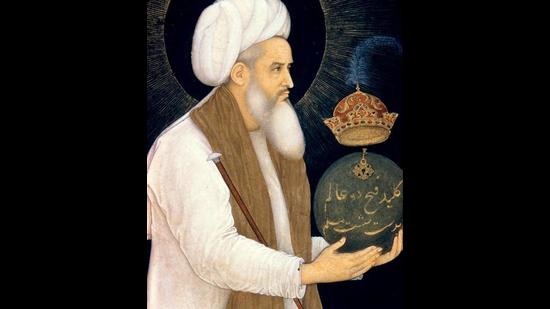
“The whole world is a manifestation of love (ishq), and we see everything as perfect… As you begin iradat, (become a murid and join the order) you stop quarrelling over kufr and iman. There is no precedence of one religion over the other. After you experience the listlessness of unbounded Beauty you can see His grace present both in a Kafir and a Muslim.’’
Abdur Rahman Chishti, a writer and Sufi who lived in the 17th century, knew Sanskrit, translated the Gita, wrote a history of the Sufis from the time of Prophet Mohammed, and wrote tracts on two popular saints, Shah Madar of Manakpur and Ghazi Miyan of Bahraich, the last made famous for historians by Shahid Amin in his acclaimed book, Conquest and Community. Abdurrahman Chishti also created a work based, roughly, on the Bhavishya Purana, which tried to combine the Hindu and Islamic ideas of genesis. He said that the Sufi credo is that “we should appropriate the good thing and the good word (sukhan I nik) from each community. This is the message in the hadith of the Prophet, take what is good and pure, reject what is dirty and impure: Khuz ma safa da’ ma kadir.” This finds some equivalence in the Vedic mantra Aano Bhadra Krtavo Yantu Vishwatah: “Let noble thoughts come to me from all directions” (Rig_Veda 1.89.1) Chishti maintained that Sufis were themselves autonomous exemplars of religious practice, whether it concerned laws, conduct or practice. His biography of Shah Madar, a Syrian Jew convert to Islam of the 15th century, describes how Shah Madar received direct instructions in faith from the Prophet, from Ali, and direction to arrive in India where he was aided by Muinuddin Chishti and his spiritual power. Shah Madar became a Samad ie self-contained, someone who was beyond the need to eat or bathe, whose face was so refulgent that he kept it covered. Several stories relate to his supreme prowess including how it was only after the Prophet said Dam Madar that he was able to enter heaven during his ascension and tour of the universe. His followers consumed bhang, did not pray, kept matted locks and included many Hindus. One memorable anecdote describes the Prophet Mohammed meeting a group of 40 naked ascetics who ignore him until they require his turban for their bhang preparation. The turban becomes green after bhang is sieved through it and the Prophet learns the divine secrets after he consumes that bhang. Shah Madar’s followers were bi-shara’, outside the boundaries of sharia but for Abdur Rahman Chishti his ecumenism followed the practice (suluk) of the very first Islamic community, of the companions and the followers of the Prophet.
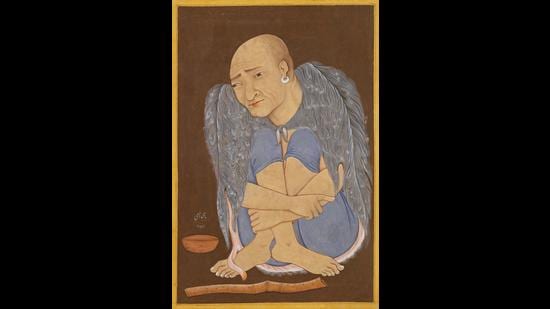
Alam maintains that because of the Chishti Sufi endorsement and exposition, the Mughal policy of Sulh I kull was not confined to the court alone but actually influenced the thought and practice of a wider range of actors in Mughal India. By the 17th century, a vast corpus of Hindu texts were available in Persian translations. These included epics, stories, philosophical works and literary criticism. The growth and dominance of Braj in the 17th century, which owed much to Mughal patronage, also ensured a transference of substantial Sanskrit learning to Mughal courts. Amir Khusrau, who claimed to know Sanskrit, had benefited tremendously from his close association with Vishwanath Shastri, a Sanskrit polymath associated with the Khilji court. By then, the 200 years-long poetic tradition of Sufi Premkhayans, exemplified by Jayasi’s Padmavat had already brought about a tremendous fusion of Hindu mythological characters and Sufi quests. The Sufis, and their followers, were therefore highly familiar with Vaishnava and Shaivite lore and philosophy. This enabled Abdur Rahman Chishti to not only translate the Gita but also to excavate other ancient texts when he came to compose Mirat-I Makhluqat, a very unusual account of the origin of the world which combines Islamic and Hindu cosmogonies.
Chishti presents Mirat I Makhluqat as a dialogue between Mahadev and Parvati, which is overheard by Vashisht. He claimed that he had read several well-known Indian history books and scriptures, written in antiquity in search of an account of Adam, the father of humankind. He found the malfuz I bashisht, which outlines the births of Adam and Muhammed along with others such as Mahadeva and Krishna. Chishti mines Islamic traditions to show that there has been more than one Adam, and that there were many eons of jinns before the birth of Adam. In this cosmogony, Allah, the Qadir-e Mutlaq, creates Brahm, who then creates Mahadev and other jinns and after they became wayward in the Dwapar Yuga, Mahadev retreats to Kailasha and Krishna helps Mohammed re-establish the righteous path on earth. Hindus are descendants of the jinns and are therefore cognate with Muslims. Chishti, says Alam, shows extraordinary familiarity with key Hindu philosophers such as Gautam, Jabal, Jaimini and Shankaracharya. In the introduction to his translation of the Gita, Chishti says,
“I call this treatise Mirat Al Haqaiq, which is known in Hindavi as the Gita, in which Krishna explained to Arjuna, by means of examples, the secrets of Tauhid. Byas collected and put together that explanation in order to instruct people. All the learned Hindus agree that Krishna has taken the secrets of knowledge of the unification of God from the four Beds and has revealed this explanation in the Gita. So just as the enlightened Shaykh Sufi Qutub Jahani once wrote a commentary on the Kashf Al Kunuz, also known as Yog Vasishta, so I am doing this translation in Persian.’’
In a similar vein, Alam discusses Dara Shukoh’s new translation of the Yog Vashishta, a philosophical dialogue between the sage Vashisht and Rama which is appended to the Ramyana. Two previous Persian translations already existed, so why did Dara commission a new version? We all know about Dara Shukoh’s immersion in the Upanishads and Vedantic thought which, he claimed, shared similarity with Wahdat Ul Wujud orientations. Dara was very close to the Hindu saint Babalal and had already commissioned and created translations of the Upanishads known as Sirr-e Akbar. His comparative study of religions, Majma Ul Bahrain, had also been translated back into Sanskrit as Samudra Sangam. Dara says that one day he had a dream in which Vashisht appeared along with Rama where he introduced Dara to Rama as his younger brother and bade him share sweets with the former. Alam convincingly shows that Dara embarked upon the translation because he wished to present a new model of Kingship which could combine Sufistic principles with the responsibilities of running a kingdom. Rama is presented as an ideal spiritual master and an ideal king, the greatest renouncer and the greatest ruler. The translation showed that Dara intended to model his future kingship on Rama. The text found a ready ecology in Sufi doctrines since it had affinities with Ibn Al Arabi’s philosophy, and was therefore immediately at home. The conversations, says Alam, often seem to be a dialogue between Sufis where words like fana, baqa, wujud abound. Here is an example:
“O Ramchand, when you are in the company of the people of the Sufi path (suluk) and struggle to study the books of the science of the sufiya that is when you quickly achieve knowledge of the self, ma’arifat i nafs, which is the prime objective, and which you can never achieve through ages of hard work.”
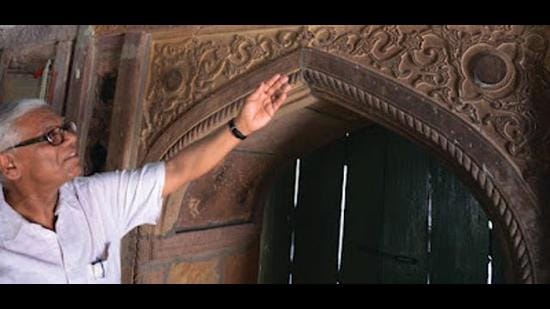
In an essay on three Mughal princesses, Aurangzeb’s sisters Jahanara and Roshanara and his daughter Zebunnisa, Alam writes about the important role played by women in Mughal court and society. They travelled with emperors, arbitrated in conflicts, negotiated between opposing parties, and mediated relationships between the temporal and sacred orders. All three conducted extensive correspondence with Sufi saints of different orders. Jahanara, who was the elder, was a public figure in every sense of the term. She gave endowments to charities, constructed mosques and other public buildings, amassed libraries, invested in ships, conducted her own businesses and interceded in public affairs. According to some accounts, she advised Aurangzeb against the imposition of Sharia. She was allowed to build her own palace in Delhi and had willed her very substantial income, valued up to three crores, to charity. She is quite explicit that her gender was no bar to her spiritual status. She maintained that women too could become an embodiment of perfection despite their gender, insan-e kamil agarchi zan ast. In this state both men and women, chi zan wa chi mard, may be graced with spiritual boons, for God does not discriminate between His friends along gender. Jahanara left behind two famous works while Zebunnisa was a renowned and oft-quoted poet and Roshanara’s memory is still preserved in the city of Delhi by the garden named after her.
With the onset of colonialism, Muslim reformers became highly suspicious of Sufism and gradually its importance declined. On the other hand, the construction of modern nationalism demanded monoliths where pluralistic voices such as the above became anathema to hardliners of both sides. But through this and his other works Alam has successfully shown us the rich and variegated landscape of the republican world of Indian religiosity where each seer was a leader unto her own and where boundaries merged. India’s rich past of cultural exchange and miscegenation does not suit those who only know and preach antagonism in its past and present. Those who invoked and championed the spirit of Hindustan Jannat Nishan in the past have never been more needed in the present. As the poet Sadiq Jung Bhadur ‘Hilm’ said, Kanhaiyya, Yaad Hai Kuchh Bhi Hamari?
Mahmood Farooqui is the author of Besieged: Voices from Dehi, 1857.



